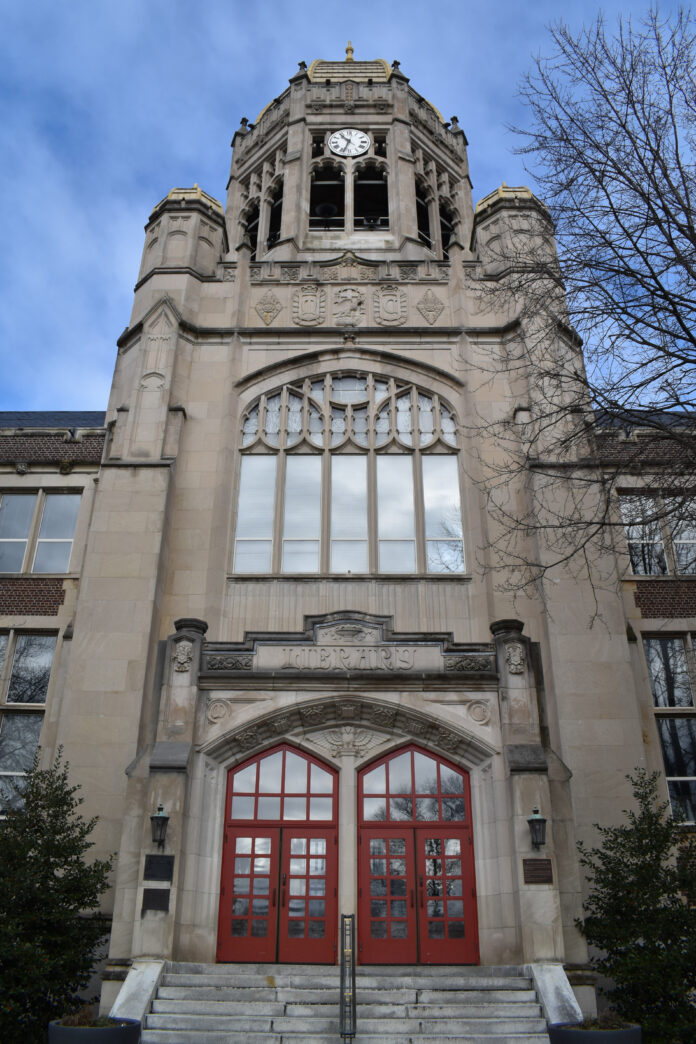“It was unmanageable before, now it’s just comical.” One anonymous student gave their candid thoughts on the most recent raise in tuition. As Muhlenberg students head towards the upcoming school year, with more rules already in place regarding all students having to live on campus all four years, the absolute last thing students want to see is an email in their inbox explaining a tuition increase.
Yet, on Feb. 29, 2024, all non-graduating students at Muhlenberg received an email outlining yet another tuition increase for the 2024-2025 academic year. The tuition increase from 2022-2023 was 3.9 percent and 2023-2024 was 3.85 percent. For this upcoming academic year, tuition and fees have been raised by 4.27 percent. This puts the cost of tuition and fees for 2024-2025 at $77,353.
Julie Morrison ‘26, expressed her frustration with the increase. “I went here because it was the most affordable option, and now they’re just raising tuition consistently. Plus, they’re getting rid of off-campus housing, so now we’re forced to pay for room and board, so we have to pay more anyway.”
There is not yet a significant amount of comparable data on tuition and fees for 2024-2025 colleges and universities. However, national averages from 2023-2024 can be examined. Muhlenberg’s tuition and fees, including housing, were raised to $74,050 in the 2023-2024 academic year. Muhlenberg is considered to be a private, nonprofit, four-year institution. The College Board announced the average costs of tuition and fees for various different types of higher institutions for 2023-2024. They found that a private nonprofit four-year’s average tuition and fees, including housing, were $56,190. That’s a little over half of Muhlenberg’s 2023-2024 cost.
President Kathleen Harring, Ph.D., in collaboration with Vice President for Enrollment Management Meg Ryan and Chief Financial Officer Curt Topper, answered questions about the newest tuition increase. They explained that “Muhlenberg’s cost tends to be lower than comparable institutions. We follow the costs of several other private institutions in areas with similar costs of living, and Muhlenberg has ranked at or near the bottom of that list every year. Additionally, our annual cost increases have been at or lower than the national average for non-profit four-year institutions. For example, according to the College Board, the 2023-2024 average cost increase for private, non-profit, four-year colleges over the previous year was 4.0 percent, whereas our cost increase that year was 3.65 percent.”
Though Muhlenberg’s percentage increase is consistently lower than the national average, the actual tuition rate is significantly higher than in similar institutions.
Muhlenberg awards 99 percent of its students with some sort of financial aid to offset the “sticker price” of a Muhlenberg education. This aid allows for the opportunities at Muhlenberg to be available to prospective students who need financial assistance. While this 99 percent is fantastic, it is important to note how tuition increases impact financial aid and awards that are given to students. When asked if merit scholarships increase according to the percentage increase – this would mean a 4.27 percent increase for the 2024-2025 academic year – Harring, Ryan and Topper explained that “Merit scholarships do not change year over year. However, need-based aid may increase for those who are eligible for need-based aid. This ensures that our financial aid dollars are supporting students with the most financial need.” For students who rely on merit scholarships as a consistent form of aid, the scholarship value decreases year after year.
For instance, students in the Dana Scholars program are awarded an annual stipend of $5,000. With the 4.27 percent tuition increase, this original scholarship depletes in value, making the actual value received feel like $4,786.50. Any decrease in the value of a promised scholarship has the potential to be a significant barrier for already committed, admitted and attending students at Muhlenberg who have no control over tuition increases and are already too far into their undergraduate education to consider alternative higher education options if the costs become exclusionary.
Alyssa Kaplan ‘25, expressed her concerns. “My merit scholarships when I first arrived at Muhlenberg felt promising, but they are beginning to feel more meaningless as the tuition keeps being raised.”
Harring, Ryan and Topper also detailed that “The College posts its breakdown of individual costs on the website.” Some of these fees are shocking, and often go unnoticed. Two jarring fees are a Student Teaching fee of $417, and an orientation fee of $210. Student teaching is mandatory for all students on the education track, and orientation is mandatory for all incoming first-year students, as well as students who transfer into Muhlenberg. It is clear that students have a myriad of fees that are not considered in the “sticker price,” yet are mandatory based on class year or program of study.
Anna Holmwood ‘24, an English literature major, obtaining a teaching certification in 7th-12th grade English, shares her experience of having to pay for fieldwork. “Student teaching is around $400 extra a semester. I am usually working from 7:30 a.m. to 3 p.m., and then I’ll work from 5 p.m. to 10 p.m. every night. Student teachers plan lessons, make slides and materials, create assessments and grade student work.” Students are paying extra to work in Lehigh Valley school districts, as a part of their education track requirements.
In the original email explaining the increase in tuition and fees, multiple educational initiatives were mentioned as being a reason for the monetary increase. Harring stated, “We also are excited to share that we are investing in a range of exceptional new opportunities for our students. To augment our challenging, supportive academic and student life programs, we continue to create and enhance resources like our renovated Finance Lab and our mock pre-health application process to help students translate their academic achievements into successful post-collegiate endeavors.”
A music and religious studies double major, who wanted to stay anonymous, expressed their concerns. “I think that the renovated Finance Lab and mock pre-health application process are great resources that are being added to the school. However, I also think that resources that all students are helping to create should benefit all students. Because of my program of study, I will never be able to use these resources, yet it was clearly outlined that my tuition money is going towards their funding.”
When this discontent from students was mentioned to Harring, Ryan and Topper, explained “Tuition and fees fund a range of improvements every year that benefit every student. Recently we have made significant investments in student-research resources, the career center, study abroad opportunities, instructional and research facilities and equipment, and funding for more experiential learning opportunities.”
Tuition is rising — rapidly. Are there any tangible solutions to ease this increase for students and their families? Or, can the student experience be amplified as an offset to these increases?
As of April 10, for students in the class of 2028, Muhlenberg has promised to never decrease their financial aid, although this statement is still unclear if it’s based on the percentage raise in tuition, or stays stagnant independent of any increase. In his statement, Director of Financial Aid, Greg Mitton, sympathized with students and their families. “We share students’ and families’ frustrations and know how difficult making a final college decision can be if they are uncertain or confused about the actual financial commitment they are making.”
This uncertainty, confusion and frustration doesn’t seem to be contained to just the Class of 2028. Can measures be implemented for current Muhlenberg students? Or, will tuition keep increasing, with no guarantee of fixed financial support?
Amy Swartz ‘26 is an English & creative writing and political science double major. She is a General Editorial Assistant, and is thrilled to be a part of such an amazing organization! Outside of the Weekly, you can always find her reading a new book, updating her Spotify playlists, or rewatching an episode of New Girl!
























In the article, it states that the average is a little more than half of Mulenberg’s cost… That isn’t correct. Half of Muhlenberg‘s tuition would be about $37,000, which is around $20,000 less than the average cost.